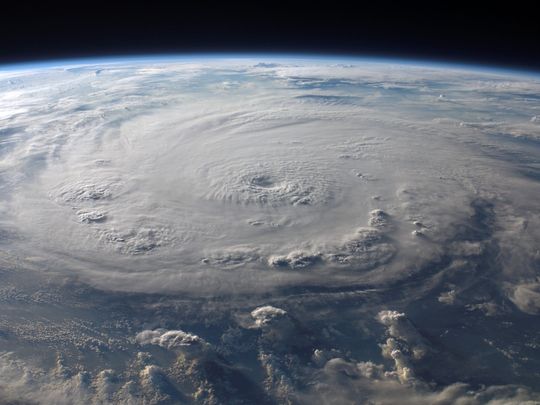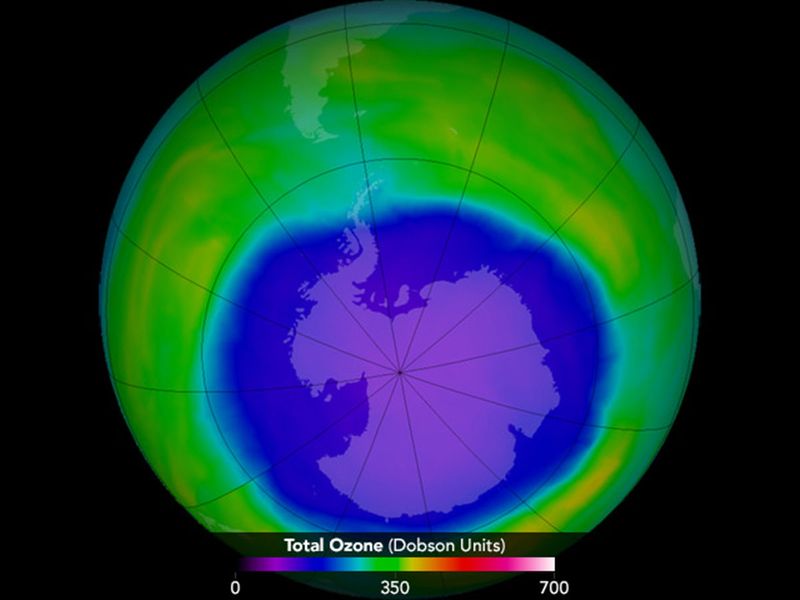
Earth’s atmosphere is composed of layers that have different characteristics. The troposphere is the lowest layer of the atmosphere that extends upward to about 10km above sea level. This is the layer where most clouds appear and almost all weather occurs. The temperature in the troposphere decreases with altitude, as it is mainly heated by its contact with the ground, not directly by solar radiation.
The next layer up is the stratosphere, which extends upward to about 50km above ground level. This is the layer where the famous ozone layer exists, which absorbs ultraviolet radiation from the Sun and protects life on Earth. The temperature in the stratosphere increases with altitude, as it is mainly heated by the ozone layer, not by the ground. This trend of rising temperatures with altitude prevents convection and makes the stratosphere more stable than the troposphere.
The third layer is the mesosphere, which extends upward to a height of 85km above our planet. This is the layer where most meteors burn up as they enter the atmosphere. The temperature in the mesosphere decreases with altitude, reaching the lowest values in the entire atmosphere at the top of this layer.
Beyond the mesosphere extends a layer of rarefied air called the thermosphere, which reaches up to 600km above Earth. This is the layer where auroras occur and where many satellites orbit. The temperature in the thermosphere increases with altitude, reaching very high values due to the absorption of solar radiation by oxygen and nitrogen molecules.
Above the thermosphere, there is no distinct layer, but rather a gradual transition to outer space called the exosphere. This is where some atoms and molecules escape from Earth’s gravity and become part of interplanetary space.
These layers of Earth’s atmosphere have different heat exchange abilities. The tropopause, which is the boundary between the troposphere and the stratosphere, acts as a barrier that hinders mixing and heat transport by convection, but it does not completely prevent it.

Heat exchange between layers
The heat exchange between the troposphere and the stratosphere can have significant impacts on both regions. For example, it can affect the ozone layer, which is located in the stratosphere and absorbs ultraviolet radiation from the Sun. The ozone layer is influenced by both chemical and dynamical processes, which depend on the temperature and composition of the stratospheric air. The heat exchange can also affect the climate system, as it can alter the radiative balance and feedbacks between the troposphere and the stratosphere.
In recent decades, scientists and researchers have investigated the ability of human activities to heat the environment. With the help of the United Nations organisations related to climate change, we have identified most of the potent gases and their ability to warm up the atmosphere. Despite the possible mitigation and adaptation measures, very limited achievement has been made to reduce global warming.
Rather, Earth’s temperature has continued rising and climate has continued to change and impact human lives. The question whether we fully understand the boundaries of Earth’s atmosphere remains to be answered. Also, can heat exchange between the lowest two layers of the atmosphere have significant impacts on both layers? Are we missing anything that has the ability to change the temperature of the atmosphere?
The phenomenon of having two layers with two different temperatures and huge variations in their content leads to possibilities of heat exchange between the two layers. The temperature variation of the atmosphere is also determined by heat exchange between the two layers. The occurrence of heat convection is responsible for air to expand and become less dense, and then rise as buoyant and turbulent bubbles. With this process, the temperature begins to decrease resulting from the expansion of isolated bubbles of air that are heated by Earth and rise upward.
The heat exchange between the layer in which we live and seek reducing heat at can be affected, therefore, by heat exchange. The heat exchange between the troposphere and the stratosphere can therefore have significant impact on climate change.
The system is affected by the heat exchange, that has the ability to alter the radiative balance and feedbacks between the troposphere and the stratosphere. This means that Earth’s climate is being impacted by heat exchange between the atmospheric layers, and maybe this heat transfer has an ability to participate in climate change.
By limiting our investigations to the impact of greenhouse gases on the tropospheric temperature, we may miss some of the complex and dynamic interactions that occur in the upper atmosphere, and that may have significant implications for the global warming phenomenon. Therefore, we need a more holistic and comprehensive approach to understand and address the causes and consequences of climate change.
— Dr Abdullah Belhaif Al Nuaimi is a former UAE minister of Infrastructure Development and for Climate Change and Environment






_resources1_16a45059ca3_small.jpg)

